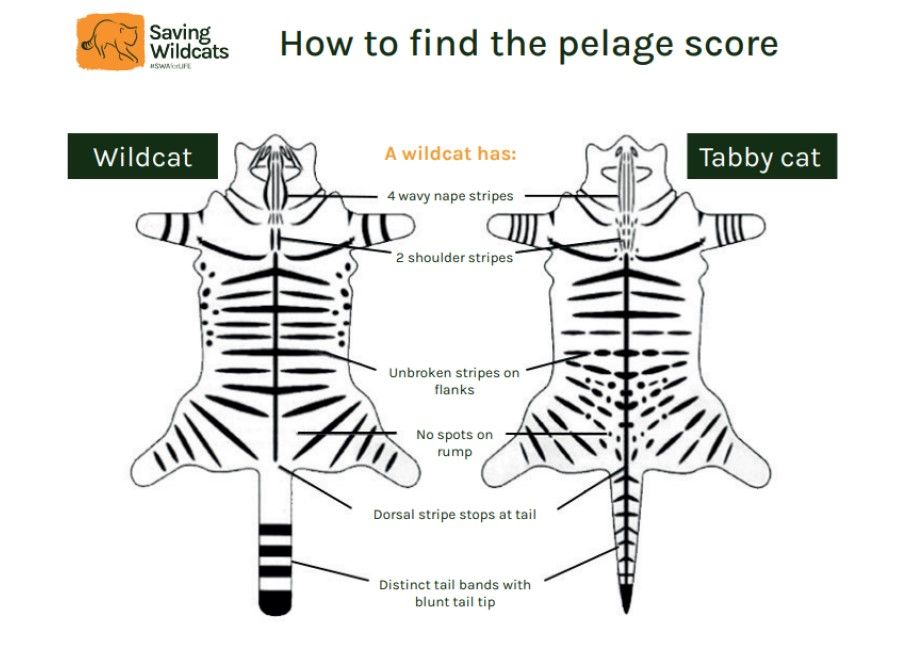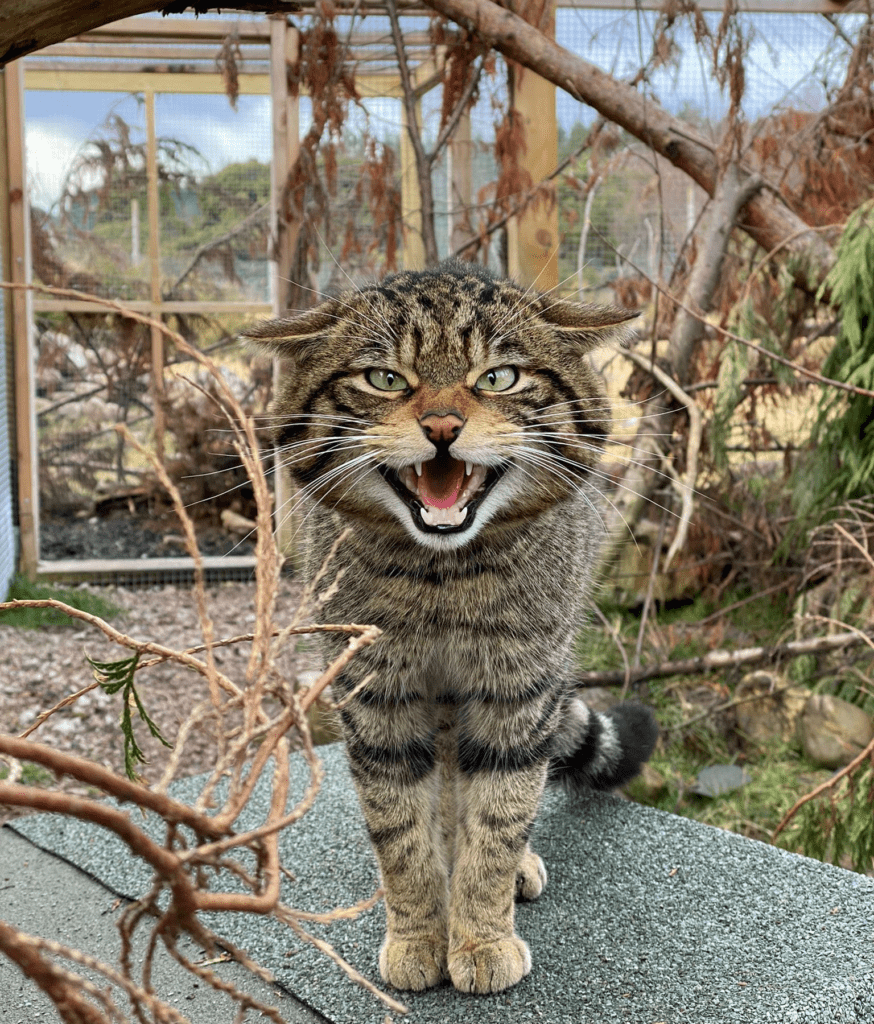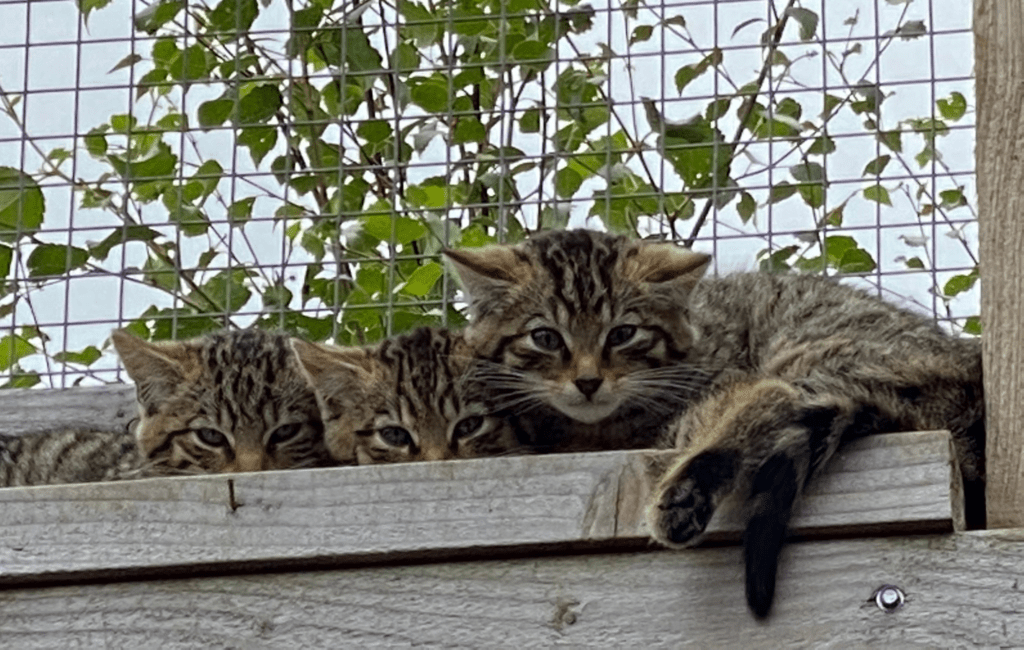Save our wildcats
Donate todayThe history of wildcats in Britain stretches back over thousands of years, but today they’re perilously close to extinction.
Due to centuries of persecution and habitat loss, wildcats disappeared from England and Wales before 1900. After this point, the Highland tiger was only found in the farthest reaches of north and west Scotland. The remaining small, fragmented populations began to face an additional threat: domestic and feral cats. Hybridisation, or interbreeding, with non-wild cats pushed wildcats in Britain to the brink of genetic extinction.
There are only a handful of wildcats remaining in the wild, and they’re more threatened than ever; they’re truly clinging on by a claw. But thanks to dedicated conservation scientists, there is hope. If we act now, these fierce and beautiful predators will not only have a history, but a future as well.
Wildcats are genetically distinct from their domestic cousins, distinguished by their solid black and brown stripes, and thick, banded tail.


Why should we save wildcats?
Wildcats are one of Britain’s last remaining predators, and a vital link in the food chain. When we lose a predator, the entire ecosystem can be thrown out of balance, affecting both plant and animal life. Losing one species has repercussions: more will always follow in its wake.
That’s why PTES believes it’s so important to save wildcats from extinction.
Image credit Saving Wildcats
How do we plan to help?
There is no longer a viable population in the wild, so the only way to save these magnificent creatures is to breed them in captivity and release them to their rightful home. With our support, Saving Wildcats are in the third year of their ambitious six-year breeding and release programme to ensure the future of this species in Scotland.

Last year, 18 wildcats from various wildlife centres around the UK arrived at a specially built centre in the Highlands. The wildcats were paired up and the breeding programme proved a huge success, with 22 new kittens born at the site. These young wildcats will soon be moved to their pre-release enclosures to prepare for their release into the wild. They’ll undergo training to develop their hunting and foraging skills and keep them physically and mentally fit. All the wildcats have limited interaction with people to ensure they retain their wild behaviours.
Excitingly, the first group of cats are due to be released into the wild this year, in the Cairngorms National Park, one of the last wildcat strongholds. This area has few landowners and boasts the space and mix of natural habitats wildcats need to roam, forage, build dens and raise kittens. This project gives us great hope for the survival of wildcats in the UK.
Donate today to be part of the first wildcat reintroduction in Britain’s history and to help save wildcats from extinction.
Not ready to donate just yet?
You can still stay up to date on all things wildlife by signing up to our e-newsletter.
Please visit our FAQs page to learn more about this wildcat reintroduction.
Header image credit RZSS.

